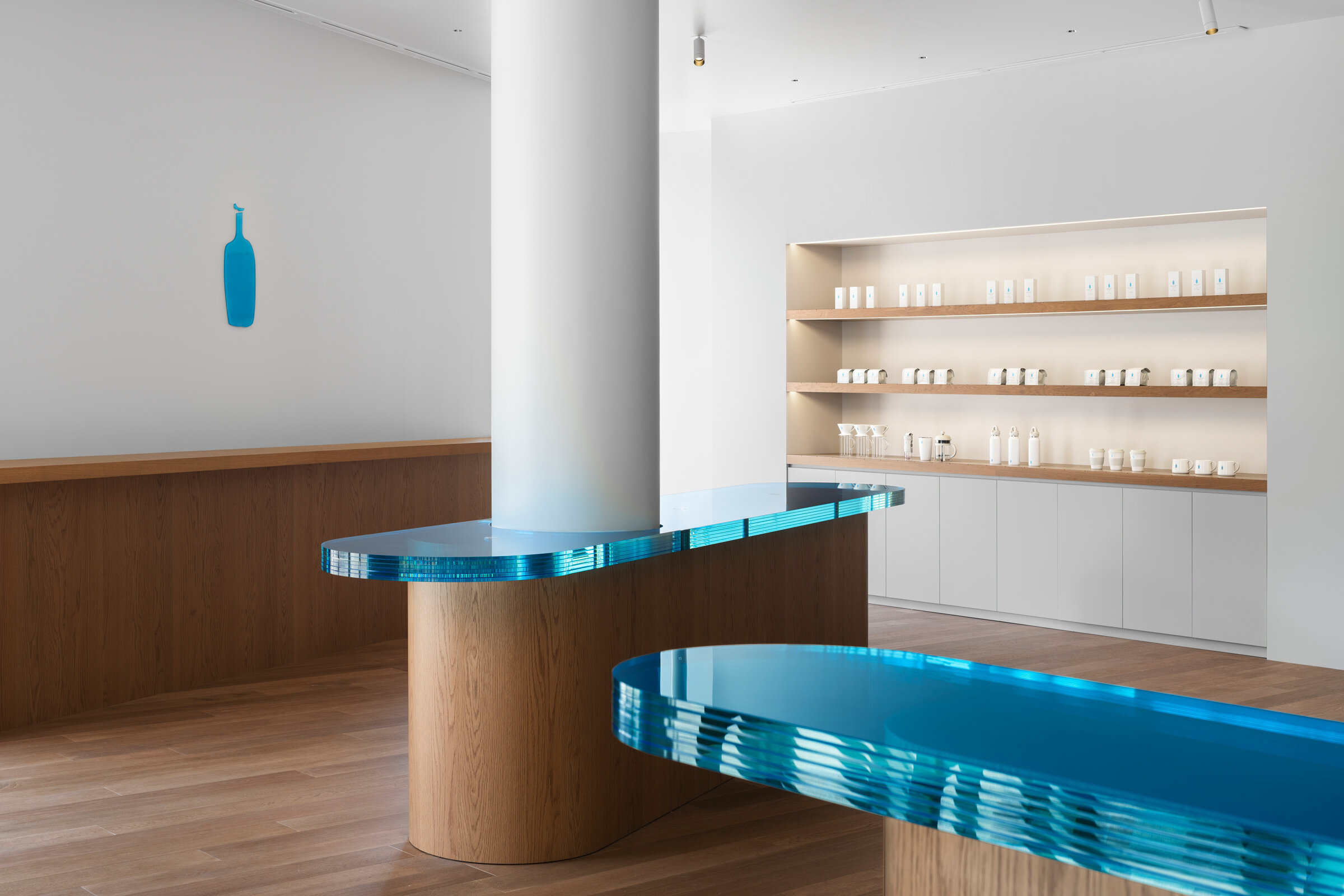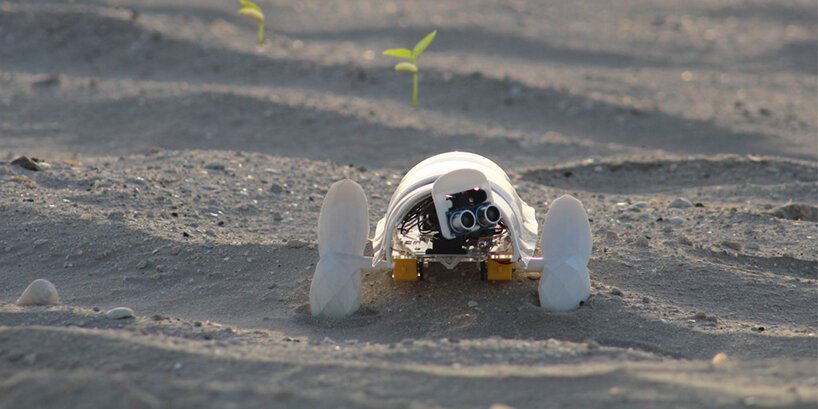The Design Dispatch offers expertly written and essential news from the design world crafted by our dedicated team. Think of it as your cheat sheet for the day in design delivered to your inbox before you’ve had your coffee. Subscribe now.
Have a news story our readers need to see? Submit it here.
Blue Bottle Coffee opens a blue-toned café in Japan designed to awaken the senses.
For its first outpost in Osaka, Blue Bottle Coffee enlisted Tokyo-based studio I IN to interpret its brand DNA through custom blue glass accenting the warm wood café and a second-floor experiential space intended to invigorate the five senses. Bathed in vibrant blue light, and images and sounds that “fall from the ceiling,” the experience is the result of a collaboration with immersive design agency Panoramatiks. “It’s not just a concept, but a place that really stimulates the five senses,” I IN states. “The space has become a completely new café interior that offers a special experience while enjoying a cup of coffee.”
New York announces a multibillion-dollar climate resiliency plan for Lower Manhattan.
Envisioned by the New York City Economic Development Corporation and the Mayor’s Office of Climate Resiliency, the Financial District and Seaport Climate Resilience Master Plan aims to fortify a one-mile stretch of the Lower Manhattan waterfront from rising sea levels and coastal storms—two environmental threats predicted to intensify in coming decades due to climate change. The proposal entails building a flood wall system that also serves as open public space. The project, which is estimated to cost between $5 to $7 billion and 15 to 20 years to complete, will safeguard 140 acres of Lower Manhattan, home to thousands of residents and one of the world’s most powerful financial districts.
An endangered Elyn Zimmerman installation will be relocated to American University.
A renovation project at the National Geographic Society once threatened a 1984 rock-and-water installation by Elyn Zimmerman, but a new agreement will see the public art piece move to American University. The installation, called Marabar, features a group of granite stones around a churning water pond. It first came under threat three years ago when the society told Zimmerman the work would impede their plans to build a new entrance pavilion. Instead of removing the piece entirely, National Geographic will foot the relocation bill. “It’s a piece that’s part of the history of landscape architecture,” Jack Rasmussen, the director of the American University Museum, told the New York Times. “A woman sculptor in the 1970s and 1980s who was doing this? It’s ground breaking.”



